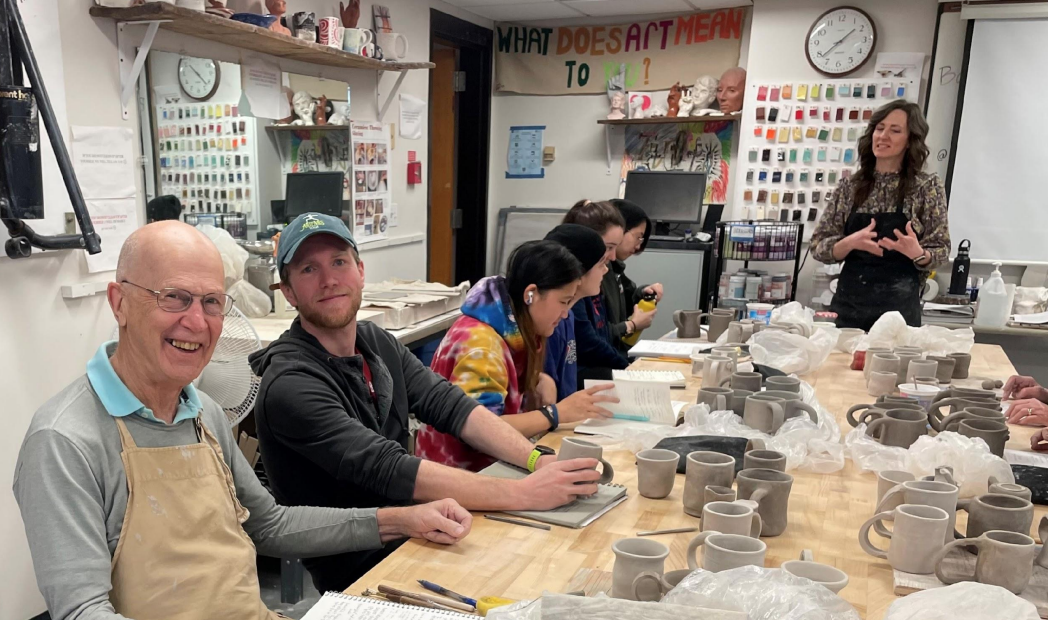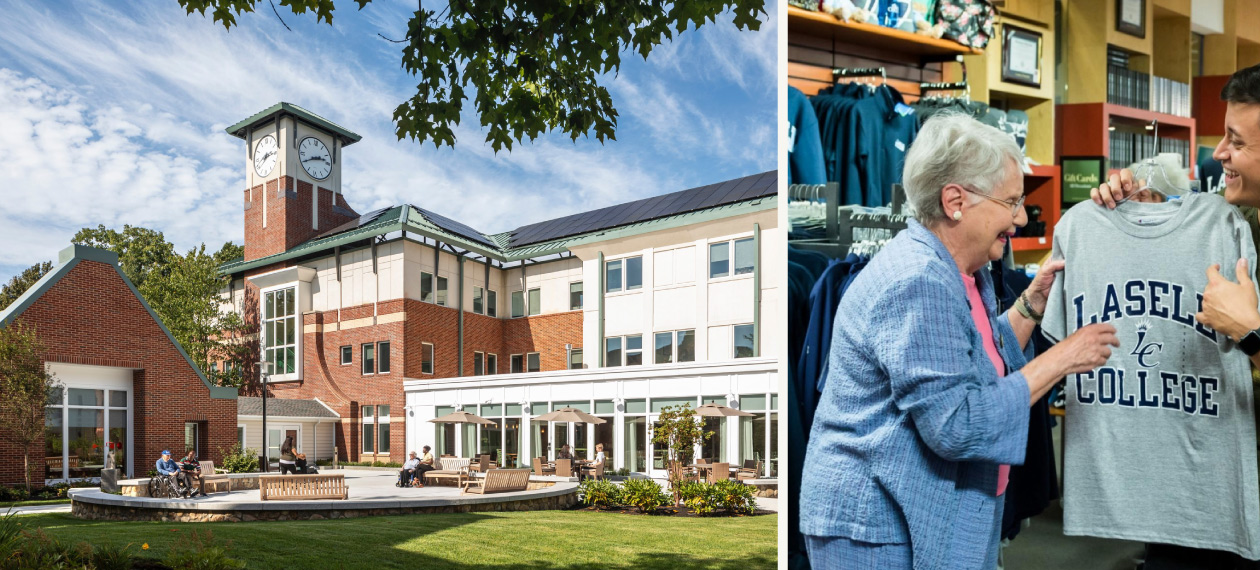At first glance, senior living communities and universities seem unlikely partners—one's mission centers on caring for older adults while the other aims to educate the young. But as Anne Doyle argued in a recent talk at the Senior Living Innovation Forum, these two sectors may be far more compatible than we realize.
Doyle knows this intersection well, having led the pioneering Lasell Village—the only senior community fully integrated into a university campus. There, Doyle saw firsthand how intergenerational connections enhanced residents’ wellbeing and the community’s bottom line. Now, as the CEO of Spark Living and Learning, a firm she founded after leaving Lasell Village, Doyle is focused on helping other senior living providers and universities create similar synergistic partnerships.
This "chocolate and peanut butter" pairing, two great tastes that are even better together, as Doyle calls it, offers rich possibilities. The higher education sector is facing an "enrollment cliff" as the number of traditional college-aged students declines due to lower birth rates. However, the senior living sector is experiencing a boom as the overall population of older adults is rapidly expanding.
So while colleges and universities are grappling with declining enrollments, senior living communities have a surging consumer base. This dichotomy presents an opportunity for mutually beneficial collaboration between the sectors.
Each sector has infrastructure to leverage and services to share. The potential is ripe for reimagining offerings on both sides.
Some universities and senior living communities have already formed partnerships, but most limit engagement to residents auditing the occasional class. Truly integrated learning requires intentional programming that breaks down age silos. When young and old tackle projects together, the magic happens. Doyle gives the example of residents teaming with media students to code personal robots. Neither group would have conceived of such an idea alone.
Cultivating this collaborative culture requires aligning organizational philosophies. Senior living providers must adopt learning as a core value and embed it holistically. When residents sense their community prioritizes growth and discovery, they generate creative activities from staging multigenerational ping pong tournaments to co-designing multi-media art exhibitions with undergraduates.
This ethos also boosts recruitment and retention. Employees, especially millennials, crave professional development. In one survey, workers ranked tuition reimbursement as their most-desired workplace benefit. Imagine the loyalty inspired when staff can obtain clinical degrees or pursue graduate studies onsite.

For residents, the cognitive and social benefits of lifelong learning are scientifically validated. Those immersed in vigorous learning environments experience less cognitive decline and lower stroke risk. Doyle suggests even ageist stereotypes could be reduced when 80-year-olds are spotted around campus with backpacks, fully engaged in their studies and campus life.
The business advantages to both partners are equally compelling. Senior living providers gain new revenue streams from shared services and student employment. Colleges fill seats in high-fixed-cost facilities and expand their customer base.
When designed thoughtfully, these symbiotic relationships can target diverse populations. Intergenerational connections have value whether residents are middle-income or affluent. The key is crafting programs tailored to each community's needs and resources.
Some senior housing providers are already planning new construction on university land. Others are reimagining existing properties to add learning spaces and strengthen town-gown ties. These joint ventures require visionary leadership to assess goals, facilitate exchange, and balance priorities. But the potential dividends—financial and interpersonal—make the effort worthwhile.
In these disruptive times, the senior living and higher education sectors face dual enrollment cliff pressures. But as Doyle argues, by combining forces, they could forge a new model that leaves single-generation silos behind. When friendships develop between eighteen year-olds and eighty year-olds, the possibilities are endless.

Posted by
SLIF heads to Carlsbad!
The One of a Kind Retreat for Senior Housing Leaders.
May 31 - June 2, 2026 | Carlsbad, CA
Learn More









Comments